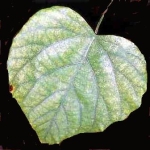| Common Name: |
Pareira Brava |
| Other Names: |
Pareira |
| Botanical Name: |
Chondodendron tomentosum |
| Genus: |
Chondodendron |
| Family: |
Menispermaceae |
| Native Location: |
Brazil, Bolivia, Peru |
| Cultivation: |
Not cultivated |
| Propagation: |
There is no information on propagation requirements |
| Harvest: |
Roots and stems are collected from the wild as available and processed by the pharmaceutical industry into liquid extracts. |
| Height: |
30m (100ft) |
| Width: |
Indefinite |
| Hardiness: |
Min. 15-18°C (59-64°F) |
| Parts Used: |
Stems, roots |
| Properties: |
A bitter-sweet, diuretic, laxative herb that lowers fever and stimulates the uterus, when taken orally. |
| Medicinal Uses: |
Mainly intravenously as a source of d-tubocurarine, used to relax muscles during surgery. Used in folk medicine to treat inflammation of the urinary tract, and as a remedy for snakebite. |
| Warning: |
This herb, especially in the form of curare, is subject to legal restrictions in some countries. |
| Bibliography: |
Encyclopedia of Herbs by Deni Brown Copyright © 1995, 2001 Dorling Kindersley Limited Pg 167 |

